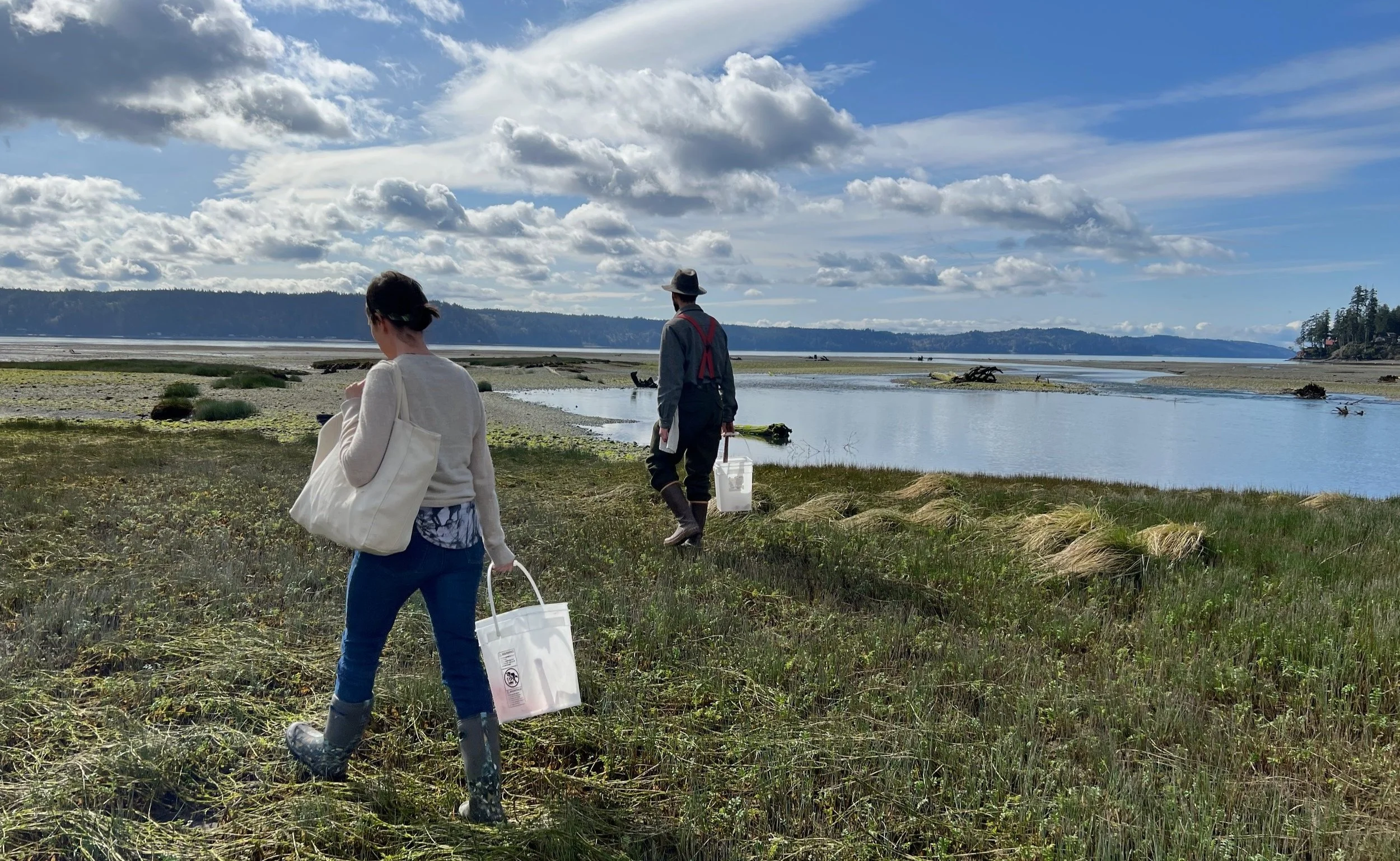the store outside your door
How to forage for shellfish on the Hood Canal
Words & photos by Leif Utne
Foraging for wild oysters and clams
Shellfishing on the Hood Canal is ideal in early spring, when runoff from the Olympic Mountains floods the fjord with fresh, cold water, and low tide falls around midday. That’s when Bruce McGlenn invited me along on one of his shellfish foraging courses near Brinnon.
McGlenn is the founder of Human Nature Hunting, which runs a variety of courses for those curious about developing a closer relationship with their food.
“Hunting and gathering offer a unique way of interacting with our environment,” McGlenn writes on his website, “by moving from observer to direct participant in the natural drama of life that unfolds around us.”
As an unrepentant omnivore who cares about my impact on the environment, that sentiment resonates deeply. I can think of nothing more ethical than using your own hands to take the life of an animal you are about to eat. At least in theory. But like most metropolitan dwellers, I hadn't taken much time to put that theory into practice until joining Bruce on the mudflats of the Hood Canal.
I meet up with McGlenn on a Friday morning in early April at the mouth of a river near Brinnon. He and two helpers, his partner Sarah Long and gourmet chef Marcus Peterson, arrived in their vans the night before and set up camp for the weekend, including a full outdoor kitchen and fire ring.
All that participants had to bring from home was a rain jacket, water bottle, waterproof boots, thick work gloves, a plate, a cup and a folding chair.
Once our group of 15 arrived, McGlenn briefs us on the day’s schedule and explains the state’s daily harvest limits up to 40 steamer clams and 18 oysters per person. He hands us each a three gallon bucket with tools and we trudge across the highway to the tidal flats where we’ll spend the next couple hours gathering our catch.
At the beach, McGlenn demonstrates how to dig through the wet sand for steamer clams. Using a gardener’s hand rake, he gently turns over the top three inches of sand and gravel, revealing a dizzying quantity of shellfish. He shows how to tell the difference between Manila clams (which we want) and varnish clams (which we don’t), and how to measure them to make sure they’re not too small.
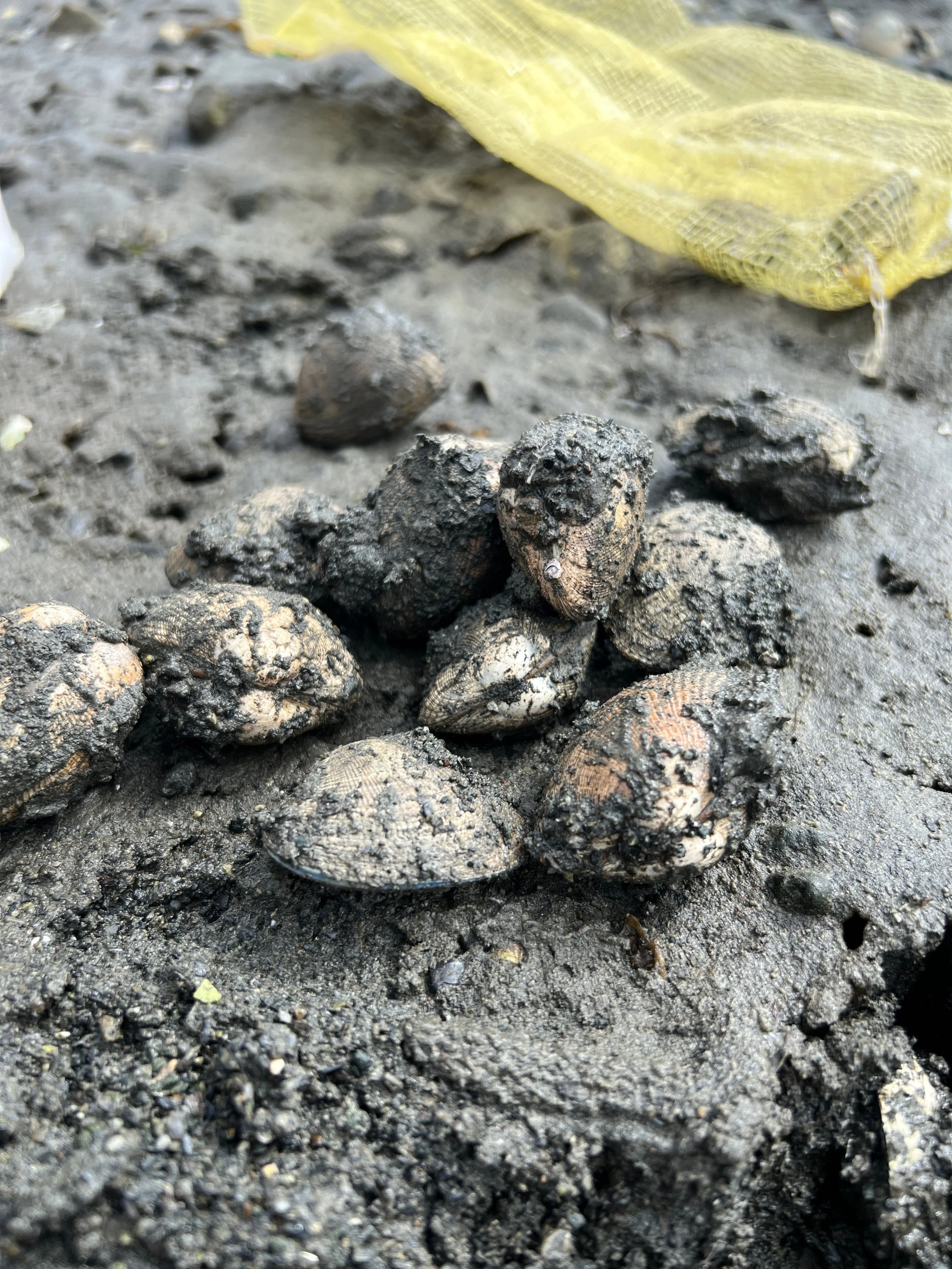
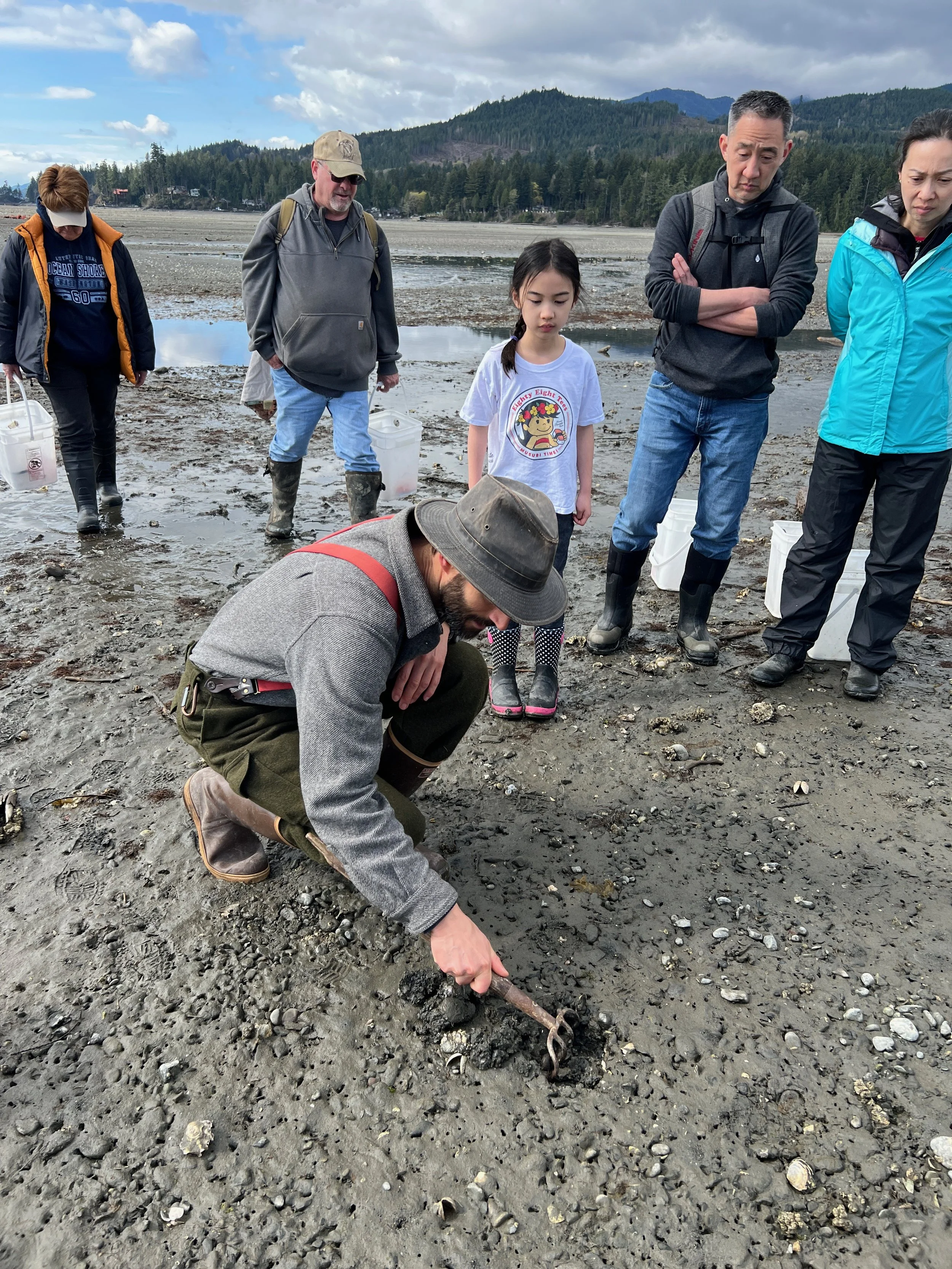

For the next hour, we’re like a bunch of kids digging in the sand for buried treasure. As her mother digs for clams, nine-year-old Olivia Takenaga, from Shoreline, takes charge of measuring them. “Look, mom,” she commands. “You have to turn it like this. See? This one’s too small.”
While we’re busy collecting clams, Sarah and Marcus set up a table covered with a couple dozen raw oysters and an array of sauces—lemon juice, soy, and a delicious mignonette. Snack time!
As we take turns slurping down those slimy sea biscuits, Bruce gives us a lesson in oyster shucking technique, demonstrating how to twist the knife in the hinge just so, then scrape it across the inside to release the oyster meat without getting any sharp shell fragments in it.
Once the tutorial is over, we go to town on the oyster beds, practicing our shucking skills and pooling our take for lunch that afternoon. Around 2:00 p.m., the tide has turned, and we head back to camp for lunch.
Now it’s Marcus’s show. He holds forth in his outdoor kitchen, showing off the knife skills he learned from a sushi chef as he regales us with stories from his time running a beach restaurant in Taiwan. He then lays out a veritable feast: clam linguini, fried oysters with smoked sea salt, cornmeal hushpuppies stuffed with smoked oysters, spaghetti with fresh nettle pesto and smoked salmon, garlic bread, and a large green salad.
As a special treat, Bruce brings out two large pieces of tenderloin from an elk he hunted himself.
As we sit around the fire ring with satisfied stomachs and spirits, Bruce invites us to share our reflections on the day. The responses are all glowing, ranging from “best workshop ever” to “life-changing.”
When it’s my turn, I offer a word of gratitude to the indigenous Coast Salish people who have stewarded these lands and waters for millennia. And I thank Bruce, Sarah and Marcus for helping me seriously level up my glamping game.
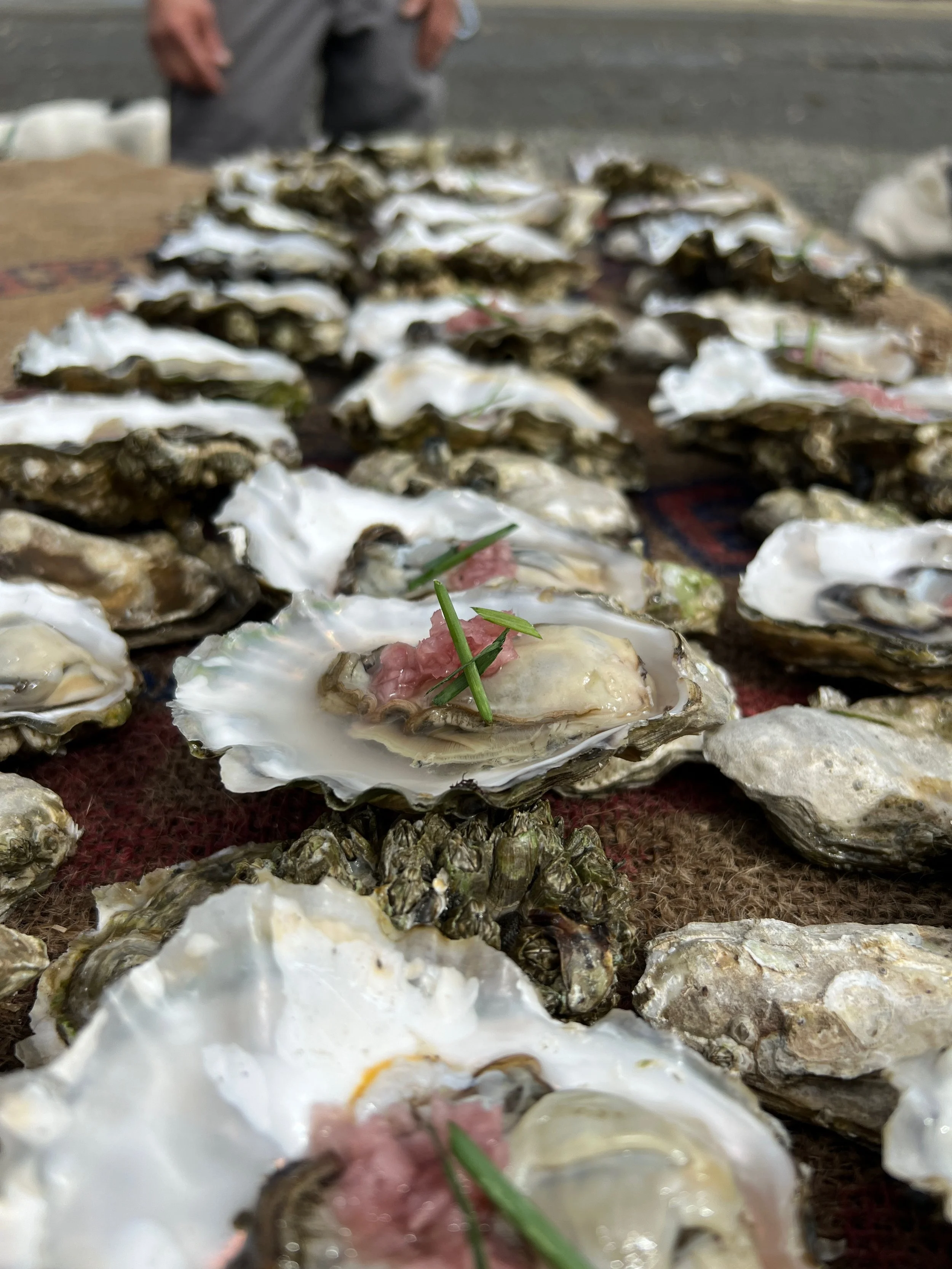

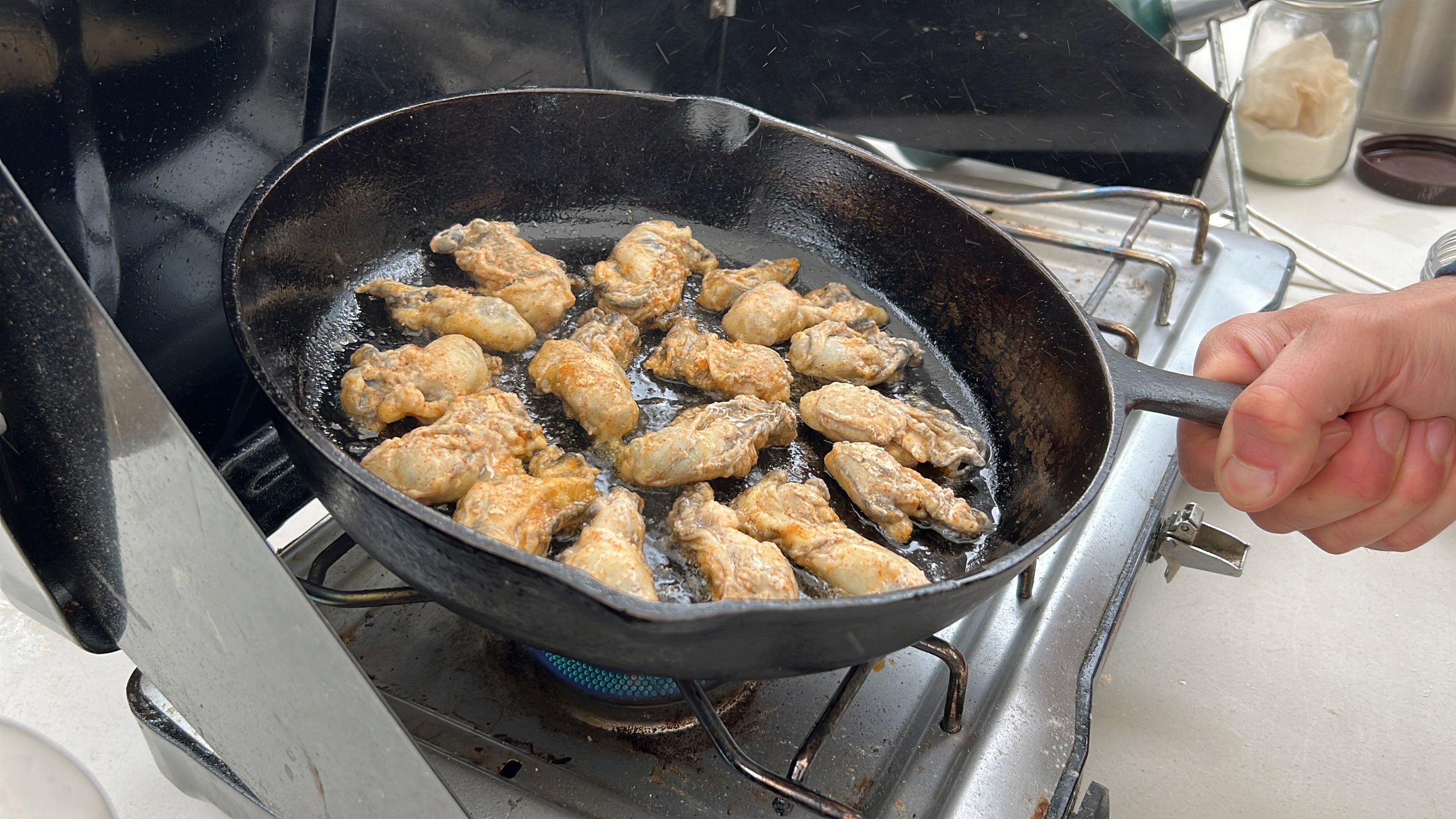
Pan-fried oysters
Prepared in the fieldINGREDIENTS
12 fresh oysters, shucked
1⁄2 c. flour, whole wheat or white
2 tbsp. grapeseed, ghee or refined coconut oil 1 tbsp. butter
Salt and pepper to taste
PREPARATION
1. Cover oysters in the flour by dredging or shaking in a bag.
2. Melt oil and butter in pan. Fry oysters in the high-heat oil and the butter until browned and slightly crispy. It is highly recommended to use a cast iron frying pan.
3. Season with salt and pepper.
4. Serve with lemon juice and tartar sauce.
Recipe courtesy of Human Nature Hunting

